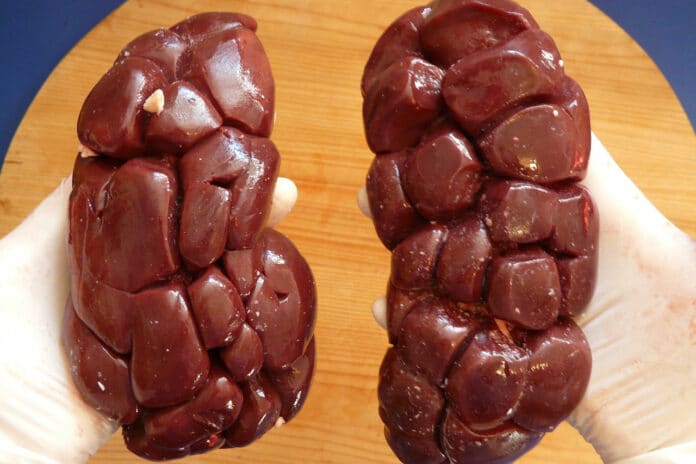Researchers have recently made a groundbreaking discovery in the field of kidney disease. They have found a new pathway that could potentially prevent kidney failure in thousands of people. With funding from Kidney Research UK, Dr. Carl May and his team at Bristol Medical School have discovered a new treatment pathway for non-genetic nephrotic syndrome.
This targets the unknown factor that leads to kidney failure. Nephrotic syndrome is a rare kidney condition that causes the protein to leak into the urine, affecting around 10,000 people annually in the UK. The discovery offers hope for patients, especially children, who may develop kidney failure.
Researchers from Bristol Renal have identified a receptor called PAR-1 that works in conjunction with an unknown factor to cause kidney failure in patients with idiopathic nephrotic syndrome (INS). They found that anti-PAR-1 treatments could block the effect of the factor and prevent kidneys from failing, potentially making transplantation a more viable option for more patients.
This discovery could revolutionize treatment options for INS patients, offering the potential to eradicate steroid use and allow transplantation to be a more beneficial treatment. Anti-PAR-1 treatments are undergoing clinical trials for other health conditions and could be trialed for INS patients in the next few years.
Dr. Carl May, a postdoctoral research associate at Bristol Medical School at the University of Bristol, said: “Researchers have made many attempts to identify the unknown factor that leads to nephrotic syndrome with little success. We knew that one or more factors were present in the blood, and if we could identify how it works in kidney patients, we could create a clear pathway to treat them and ultimately slow their progression toward kidney failure.
Using anti-PAR-1 treatments to block the effect of the factor could not only prevent kidneys failing but could make transplants a viable option for more patients with idiopathic nephrotic syndrome.”
The PAR-1 active construct is a modified version of the PAR-1 receptor with all serine and threonine residues substituted with alanine at the C-terminal tails. This makes the receptor unable to be phosphorylated at the C-terminal tail, resulting in defects in shutoff and agonist-triggered internalization.
Experiments were conducted using SV129 transgenic mice crossed with NPHS2 Cre hemizygous mice or NPHS2 rtTA Tet O Cre mice to produce developmental and inducible animals, respectively. Pod Cre PAR-1 mice were crossed with TRPC6 KO mice and back-crossed to enrich for SV129.
In vitro experiments were conducted using human and mouse podocyte cell lines and human glomerular endothelial cells generated in-house using the SV40T antigen system. Cultured podocytes were treated with PAR-1 agonist or thrombin as PAR-1 agonist or with nephrotic patient plasma. Western blotting and scratch assays were performed to assess podocyte migration.
PAR-1Active+/− mice were generated by Genoway, France, and were used in the experiments along with NPHS2 Cre and NPHS2 Cre rtTA mice and TRPC6 KO mice. The animal experiments and procedures were approved by the UK Home Office following the Animals (Scientific Procedures) Act 1986.
The researchers also found that blocking the PAR-1 pathway could prevent the progression of kidney disease in mice and reduce kidney damage. This discovery could lead to developing new treatments for kidney diseases in humans.
The study was conducted with the approval of the UK Home Office and used genetically engineered mice generated by Genoway. The researchers used in-house developed human and mouse podocyte cell lines and human glomerular endothelial cells for cell culture experiments. Western blotting was used to analyze protein lysates, and scratch assays were performed to assess podocyte migration.
Overall, this research provides new insights into the role of the PAR-1 receptor in kidney disease and offers a promising pathway for developing new treatments to prevent kidney failure in patients suffering from kidney diseases.
Journal Reference:
- Carl J.May, MusleehaChesor, SarahE. Hunter, Bryony Hayes, Rachel Barr, Tim Robert, Fern A. Barrington. Podocyte protease actuated receptor 1 stimulation in mice produces focal segmental glomerulosclerosis mirroring human disease signaling events. Kidney International. DOI: 10.1016/j.kint.2023.02.031
